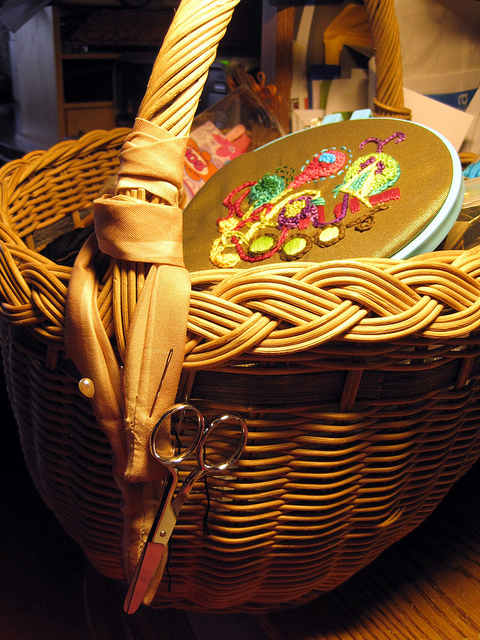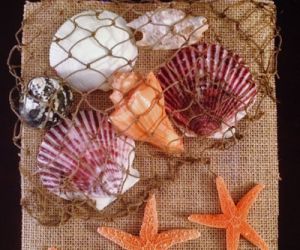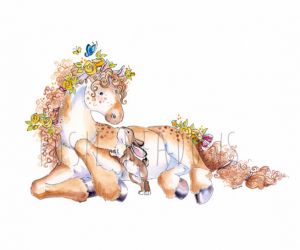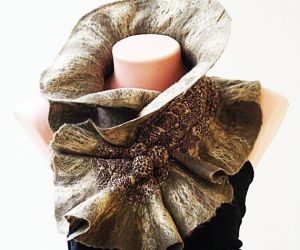 Guest author Amy White shares the fascinating history of the art of embroidery.
Guest author Amy White shares the fascinating history of the art of embroidery.
Many art forms which were once enormously popular in previous generations have lost their appeal in today’s world and are now something that is discussed in art history classes and on guided tours through museums. Fortunately, embroidery has managed to escape such a dreary fate.
If you have any lingering doubt concerning the enduring popularity of the art and craft of embroidery, you need only enter the term “embroidery” into any major internet search engine. What you’ll find is that such a search term yields a dizzying array of websites devoted to embroidery – forums, blogs, articles, pictures, organizations, and so forth. People of all ages and from all walks of life are rather enthusiastically sharing their experiences with embroidery. Embroidery enthusiasts blog about their successful new designs and tweet about their latest project.
But how has embroidery managed to experience such remarkable long life? Cultural tastes tend to change over the years, so how has embroidery managed to evolve along with the social climate? The answer may lie in the fact that embroidery was helped along by the evolution of machine usage in commercial production.
The Ancient Origins of Embroidery
Although it is difficult to pinpoint the precise date when embroidery first established itself as a unique form of decoration, there have been samples of early embroidery dated to around the 5th – 3rd century BC in China.
In many ways, embroidery was a natural progression from basic sewing and stitching techniques. People realized very early on that stitches could be used to create and mend clothing; the next logical step was to elaborate on those stitches to create decorative designs. These designs were applied not only to items of clothing but also to rugs, tapestries, hats, blankets, and pillows. Examples of ancient embroidery have been found in Egypt, India, England, and Persia.

A rather remarkable feature of embroidery is that the same basic stitches that were used in ancient times – buttonhole stitch, back stitch, stem stitch, and whip stitch – are still widely used today with very little alteration of the original technique.
Embroidery Is Shaped By the Industrial Revolution
The industrial revolution brought with it major changes to the art of embroidery. Early embroidery machines were simply mechanized looms that still required detailed embroidery handwork to be done by women factory workers. In the latter half of the 19th century however, fully functional embroidery machines that could churn out entire designs from start to finish gained massive popularity.
The introduction of machines to the world of embroidery certainly changed things. Specifically, elaborately embroidered clothing was no longer a luxury available only to the wealthy or those who had carefully mastered the skill. Automated embroidery machines meant that embroidered clothing was mass produced and could be purchased from retail stores across the nation.
The Evolution of Embroidery Continues
 The metamorphosis of the art of embroidery certainly didn’t end after the industrial revolution. In 1980, the very first computerized graphics embroidery design and production was introduced by Wilcom. Since that first melding of embroidery and computer technology, the two seem to have grown together naturally.
The metamorphosis of the art of embroidery certainly didn’t end after the industrial revolution. In 1980, the very first computerized graphics embroidery design and production was introduced by Wilcom. Since that first melding of embroidery and computer technology, the two seem to have grown together naturally.
Today, the majority of commercially available embroidery thread work is stitched by specially designed computerized embroidery machines that are able to digitize embroidery patterns through the ingenious use of software. Machine embroidery is utilized in a wide variety of common household items including drapes, linens, and business logos on apparel. Although machine usage changed the accessibility and production of embroidery, there will always be those who find great joy in doing that whip stitch with their own two hands.
Guest author Amy White is a social media specialist garnering SEO marketing and management for clients. In her spare time she enjoys spending time with her kids and reading.
Images used under the Creative Commons license. Image credits: Embroidery Supplies by davis.jacque on flickr.com, Worker Examining Fabric from Corbis Images, Machine Embroidery from Corbis Images.














[…] The Art of Embroidery (cottonridgellc.com) […]